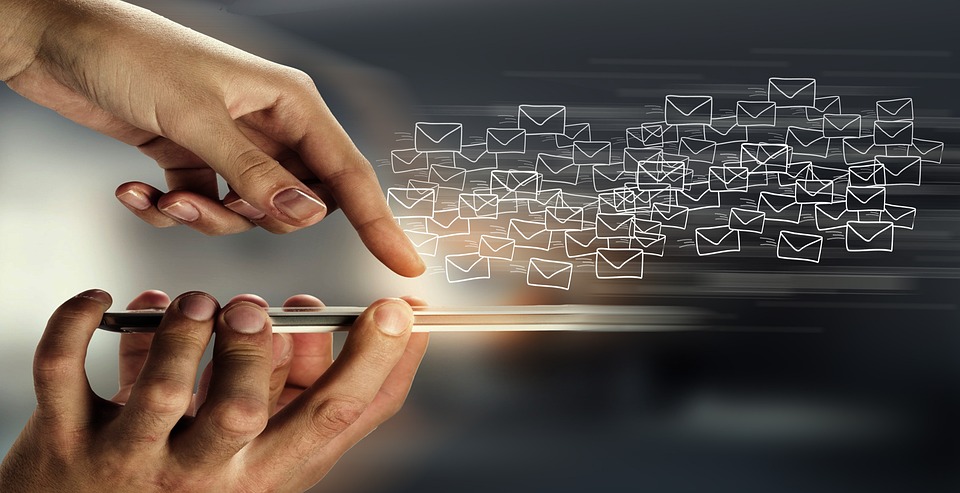Maximizing Your Email Marketing Strategy with Automation Techniques

Email marketing is a powerful tool for businesses to connect with their audience, drive sales, and build brand loyalty. However, managing email campaigns manually can be time-consuming and inefficient. That’s where automation techniques come into play. By automating certain aspects of your email marketing strategy, you can save time, increase efficiency, and deliver more personalized and targeted messages to your subscribers. In this blog post, we’ll explore how you can maximize your email marketing strategy with automation techniques.
The Benefits of Email Marketing Automation
Before we dive into the specifics of email marketing automation, let’s first discuss the benefits of incorporating automation techniques into your strategy:
- Time-saving: Automating tasks like list segmentation, scheduling emails, and sending follow-up messages can save you a significant amount of time.
- Increased efficiency: By automating repetitive tasks, you can free up time to focus on other aspects of your business.
- Personalization: Automation allows you to deliver more personalized and targeted messages to your subscribers, leading to higher engagement and conversion rates.
- Improved ROI: By delivering the right message to the right person at the right time, you can increase your ROI and drive more sales.
Key Automation Techniques for Email Marketing
Now that we’ve discussed the benefits of email marketing automation, let’s explore some key techniques that can help you maximize your email marketing strategy:
1. List Segmentation
Segmenting your email list allows you to send more targeted and relevant messages to your subscribers. By dividing your list into smaller segments based on factors like demographics, purchase history, and engagement level, you can deliver more personalized messages that resonate with your audience.
2. Drip Campaigns
Drip campaigns are a series of pre-written emails that are sent to subscribers over a set period of time. By setting up drip campaigns, you can nurture leads, onboard new customers, and re-engage inactive subscribers. This automated approach helps you stay top-of-mind with your audience and drive conversions.
3. Behavioral Triggers
Behavioral triggers are automated emails that are sent based on a subscriber’s actions or behaviors. For example, you can set up triggers to send a welcome email to new subscribers, a thank you email after a purchase, or a re-engagement email to subscribers who haven’t opened your emails in a while. By leveraging behavioral triggers, you can deliver timely and relevant messages that drive engagement and loyalty.
4. Personalization
Personalization is key to effective email marketing. By using automation tools to dynamically insert subscriber names, personalized product recommendations, and tailored content into your emails, you can create a more engaging and relevant experience for your audience. Personalized emails are more likely to be opened, clicked on, and converted, leading to higher ROI.
Best Practices for Email Marketing Automation
When implementing email marketing automation techniques, it’s important to follow best practices to ensure success:
- Set clear goals: Before setting up any automated campaigns, define your goals and objectives to ensure that your automation efforts align with your overall marketing strategy.
- Test and optimize: Continuously test and optimize your automated campaigns to improve their performance. Monitor key metrics like open rates, click-through rates, and conversion rates to identify areas for improvement.
- Comply with regulations: Make sure that your automated campaigns comply with regulations like GDPR and CAN-SPAM to avoid legal issues and maintain trust with your subscribers.
- Monitor deliverability: Keep an eye on your email deliverability rates to ensure that your emails are reaching your subscribers’ inboxes. Monitor factors like bounce rates, spam complaints, and unsubscribe rates to identify and address deliverability issues.
FAQs
Q: How can I get started with email marketing automation?
A: To get started with email marketing automation, choose an email marketing platform that offers automation features, like Mailchimp, Constant Contact, or ActiveCampaign. Set up your account, import your email list, and start creating automated campaigns based on your goals and objectives.
Q: What are some common mistakes to avoid when implementing email marketing automation?
A: Some common mistakes to avoid when implementing email marketing automation include sending too many emails, neglecting to personalize messages, and not testing and optimizing your campaigns. It’s important to strike a balance between automation and personalization to ensure that your messages resonate with your audience.
Q: How can I measure the success of my email marketing automation efforts?
A: To measure the success of your email marketing automation efforts, track key metrics like open rates, click-through rates, conversion rates, and ROI. Use A/B testing to compare different elements of your campaigns and identify what’s working and what’s not. Continuously monitor and analyze your data to make informed decisions and improve your results.
By incorporating email marketing automation techniques into your strategy, you can save time, increase efficiency, and deliver more personalized and targeted messages to your subscribers. Follow best practices, test and optimize your campaigns, and monitor key metrics to maximize the effectiveness of your email marketing automation efforts. With the right tools and strategies in place, you can drive engagement, build loyalty, and increase ROI through automated email campaigns.




